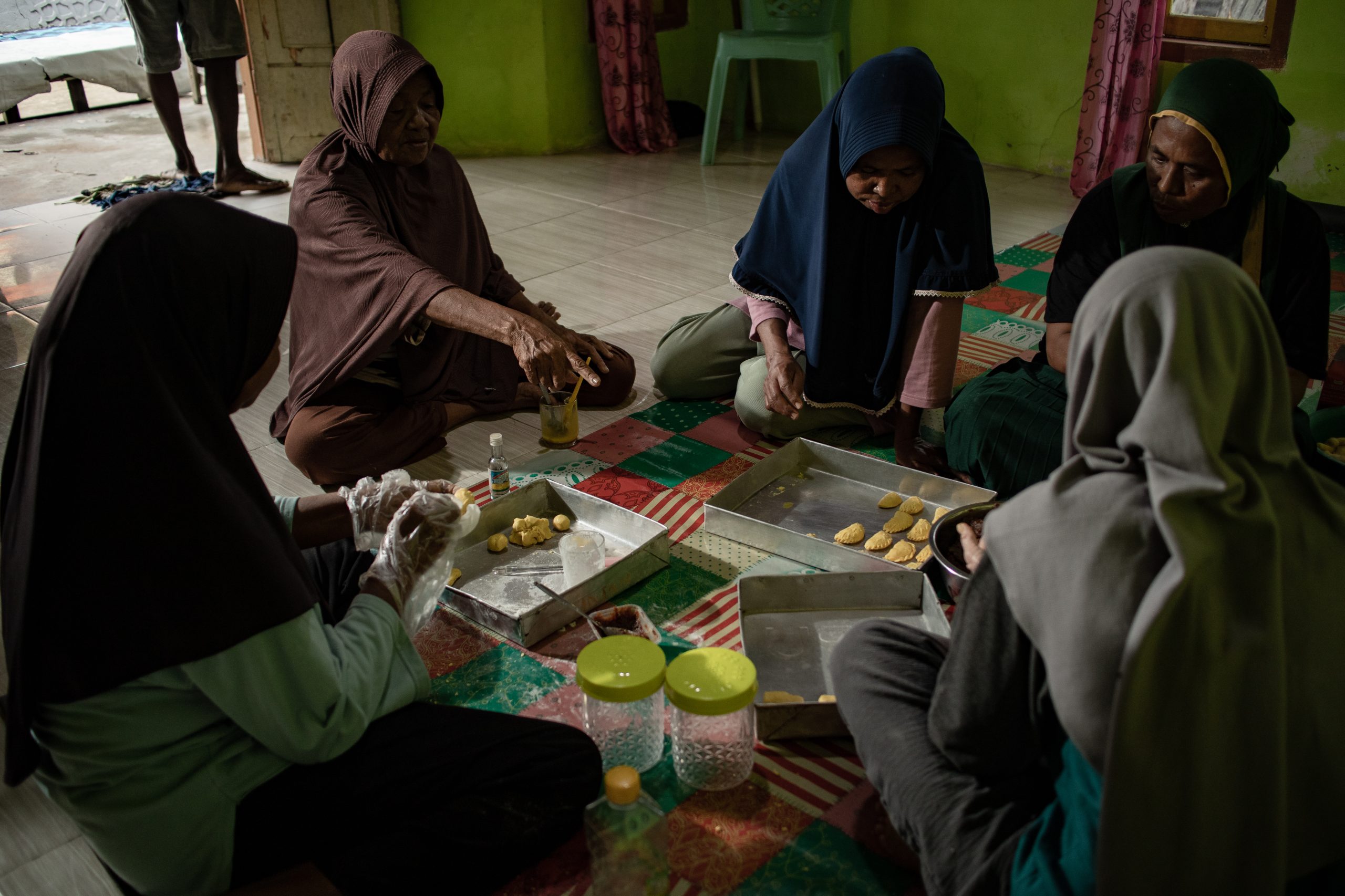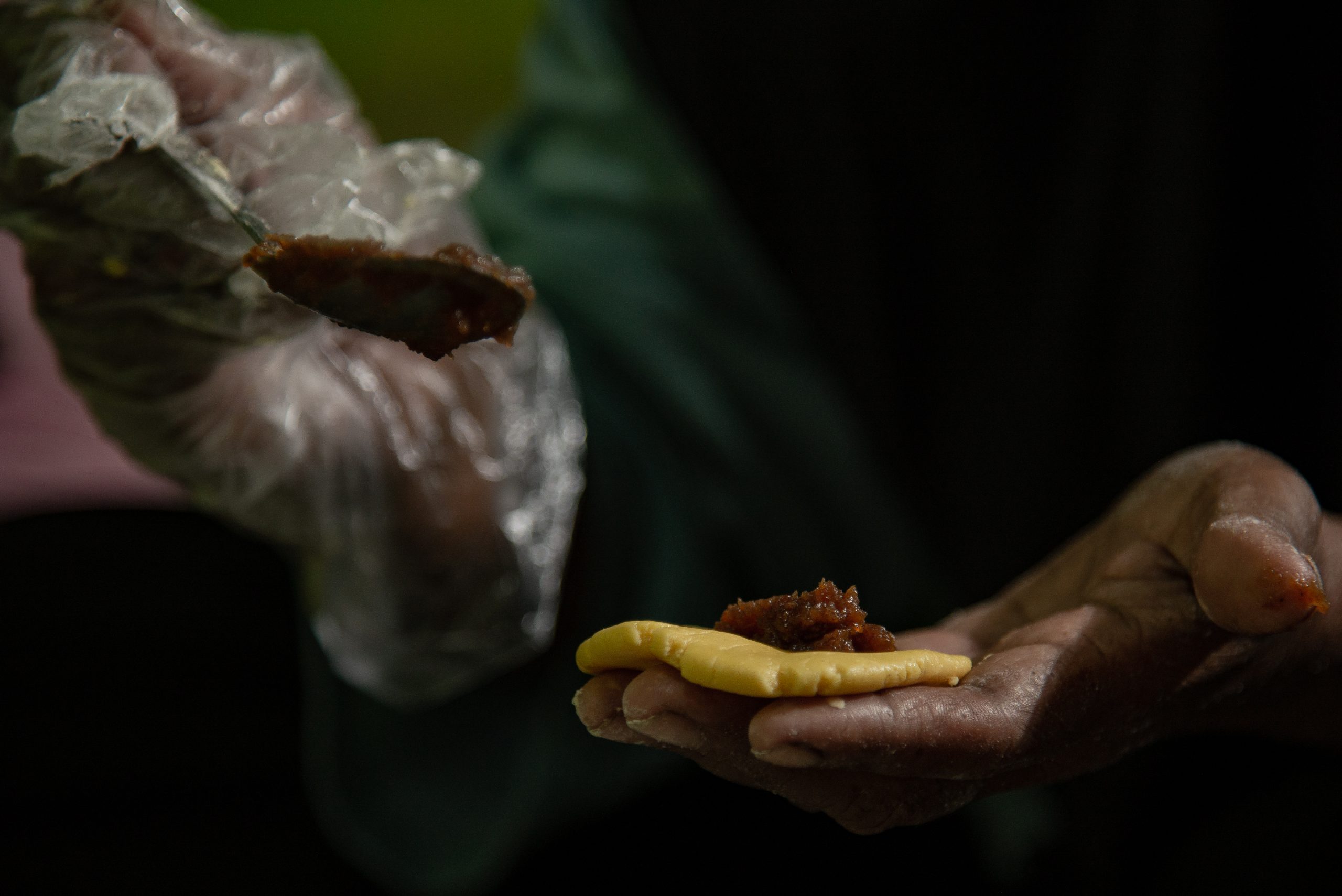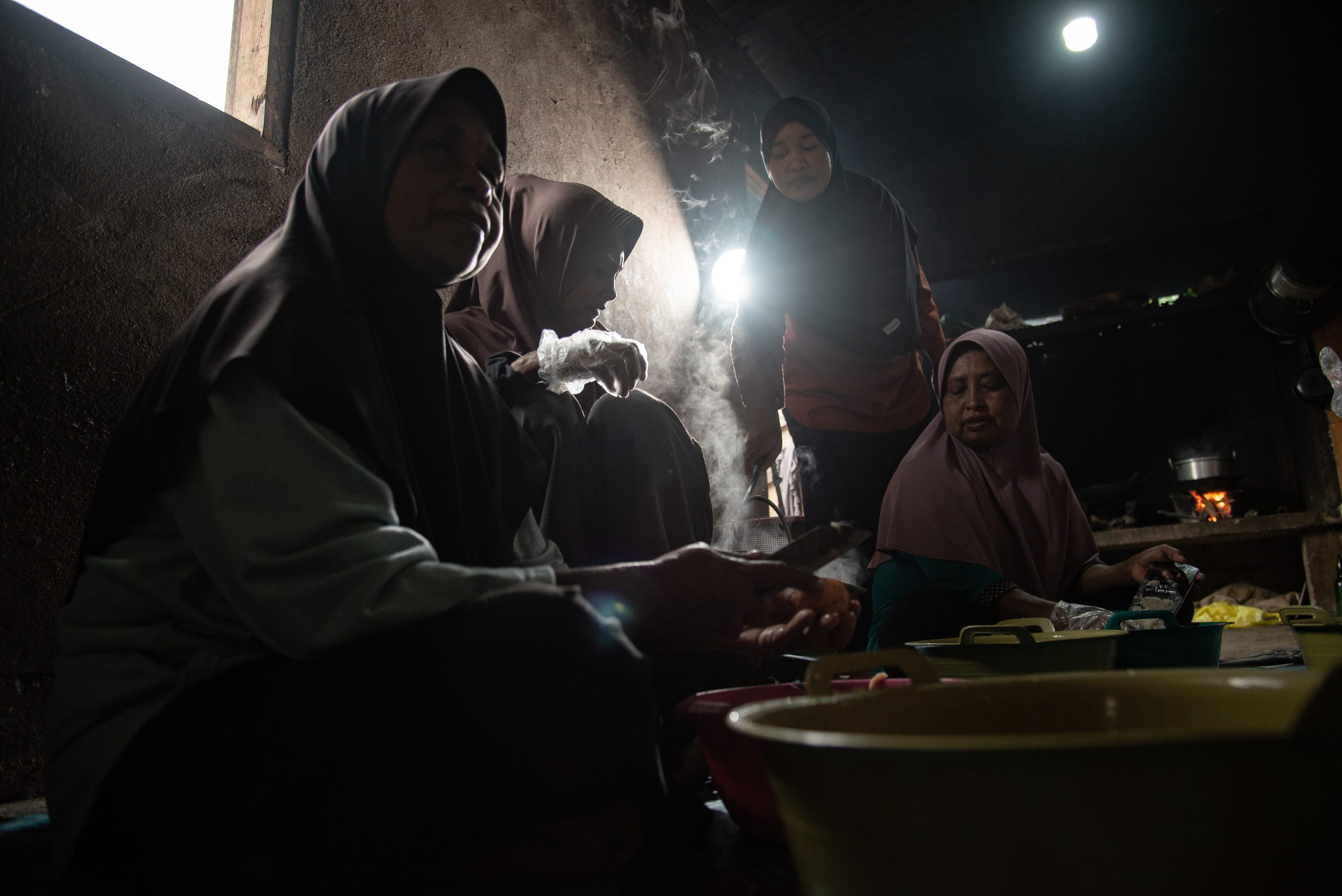
Tinarin is a small village located in Gorom Timur Sub District, Seram Bagian Timur District, Maluku Province. It is located close to the sub-district office in Miran Village, only about one kilometer away.
An exceptional woman, Liswati Rumodar, or often called Oma Lis, lives in this village. She was born in 1956 and is now 69 years old. Oma Lis’s spirit for learning and serving the village seems to have never faded away.
Oma Lis is an active figure. She is actively involved in various village development planning, monitoring, and evaluation activities. She puts so much concern on human resource improvement, especially for women. In every training or meeting in the village, Oma Lis is always there, present, and is often at the forefront.
Community involvement in various village activities, especially marginalized groups such as women, is one of the focuses of the Inclusive Rural Community Livelihood Development Program in Eastern Indonesia (BangKIT). Those who have been neglected, though they are the main objects of the development, must be fully present in the village planning process. Their presence gives a more comprehensive perspective on seeing potential and challenges in the village.
At that time, during the village planning process in 2023, Oma Lis and 35 villagers gathered for three days to map potential and vulnerability in their village. Then formulate goals and activities to develop potential and to respond to challenges. Livelihood improvement by processing agricultural products such as sago, nutmeg, and training in horticultural plant management were proposed in the planning.
For example, during a meeting in a 20-square-meter room in Tinarin Village, she immediately raised her hand, saying BangKIT Program is very helpful to the community. It provides new knowledge in processing agricultural products.
After a lengthy discussion at the office located on the beach in Tinarin Village, Oma Lis immediately invited the mothers to her house and practiced the knowledge she learned in the three-day training.
In 2024, this mother of four participated in the BangKIT training program held in Arewang Village, Pulau Gorom Sub District. There, she learned various things, from processing nutmeg flesh into jam, making organic fertilizer, turning sago into flour, to horticulture techniques.
“We just knew that sago can be made into flour from BangKIT training,” said Oma Lis at her house.
After attending the training, she did not keep the knowledge to herself. Oma Lis immediately shared the knowledge with the mothers in her village. She was not only explaining, but also invited them to practice processing sago into flour to make different types of cakes.

Sharing Knowledge in the Kitchen
One afternoon, ten women were at Oma Lis’s house, a house with green stone walls. Five of them were sitting in a circle in the rare living room. While the others were busy in the kitchen, everyone played a role.
Some were preparing sago flour, some were kneading it, and some were preparing additional ingredients. That day, they were going to make nastar cookies, not from wheat flour as usual, but from sago flour.
Oma Lis was the leading guide in the process, directing every step from measuring the sugar and the ingredients used to mixing techniques for perfect results.
“After the training, I immediately practiced. Villagers came to see and learn too,” she said with a smile.
Oma Lis’s spirit has not been fully shared with all women in Tinarin. According to the data from the Central Statistics Agency (BPS) of Maluku Province in 2024, the number of women in Tinarin Village was 259 out of the total population, which was 517.
Sadly, only ten out of hundreds of women are learning actively with Oma Lis.
After the nastar dough was ready, the mothers made two shapes. The first is round with serrated edges, with nutmeg jam in the center.
Second, pastry-like shape, with a nutmeg jam filling inside. Next, nastar cookies were placed on a rectangular baking sheet.
Then the tops of the cookies were smothered with egg yolk and cooking oil using a small brush to make them shiny, and placed in the oven.
According to Oma Lis, sago flour can be processed into different types of cakes, both dry and wet. Cookies such as nastar, choco chip, and sago worms, and cakes, like brownies.

Ambas, a 52-year-old housewife, also learned from Oma Lis. She had never processed sago flour into cakes before, including for her consumption. After attending BangKIT training in Bula Sub District in May 2025, she practiced.
“I didn’t know sago could be made into cakes before,” Ambas said. “Just about to practice.”
She explained that processing sago flour into cakes is not that hard. Mothers in Tinarin Village are used to making cakes during big days, such as Eid al-Fitr. However, the process of making sago flour is time-consuming. Sago must be dried first for three days. If it is cloudy, people usually use the heat of a kerosene stove.
In addition to processing sago flour, the mothers also learned to make jam from nutmeg flesh. One container of jam containing 200 grams could be made from 22 nutmegs. The jam was then used as a filling for nastar cookies or enjoyed right away. Ambas said, previously, nutmeg flesh was considered waste. It was immediately thrown away.
“I just found out that it can be made into jam. We usually just throw it away,” she said while stroking his hands.
Marketing Challenges
Even with the new skills, the mothers in Tinarin did not have the courage to sell their products. According to Oma Lis, this is due to the limited knowledge in marketing. They do not know where to sell the products and the price.
“For personal consumption, not for sale yet,” she said. “The knowledge is there, yet no buyers,” said Oma Lis.
Deep inside, Oma Lis expects so much. She wants the training to improve the family’s standard of living. Yet, the knowledge has been stagnant as it does not generate extra income.
Oma Lis and the mothers in Tinarin are not demotivated by the challenges in marketing. They keep on learning, practicing, and sharing. Yet, the limited access to the market makes them seem to be running in place.
They did not give up. With proper guidance, government assistance, and the collective spirit of the people, Tinarin Village may become the center for processed sago and nutmeg products in the future.
For Oma Lis, learning knows no age. And, for Tinarin women, the kitchen is not just a place to cook, it is also a space to grow, learn, and dream.
Who would have thought that the assistance for the village plan development from the BangKIT Program brought changes to the lives of Oma Lis and other women in Tinarin Village? They chose to utilize the natural resources in their area and dared to dream of progressing further. That is how a village plan should work, fostering hope and paving the way for the community to make it happen.
Oma Lis hopes that the government, especially the Cooperative Office of Seram Bagian Timur District, will step in to provide further training on product marketing. Oma Lis dreams that one day Tinarin’s processed products will enter markets outside Gorom Island.
“I once sent the products to Jayapura for my family. Three to four 200-milliliter jars, sold for 20 thousand rupiahs per jar,” she said.
Ambas expressed the same hope. She believes selling the processed sago and nutmeg products will open new business opportunities for villagers, especially women.

Untapped Potential
Most of the villagers in Tinarin depend on agriculture for their livelihood. The main commodities are sago, nutmeg, and cloves. Some also grow vegetables and horticultural crops for daily needs.
Unfortunately, the agricultural products do not provide a steady income. Sago, for example, is for daily consumption only or sold raw without further processing.
“There has been no value added,” said Ambas. “Sago is simply a staple food.”
She added that her husband is currently farming sago. One sago tree harvested at a minimum age of ten years can produce 1 to 3 sacks of sago flour, each weighing 25 kilograms.